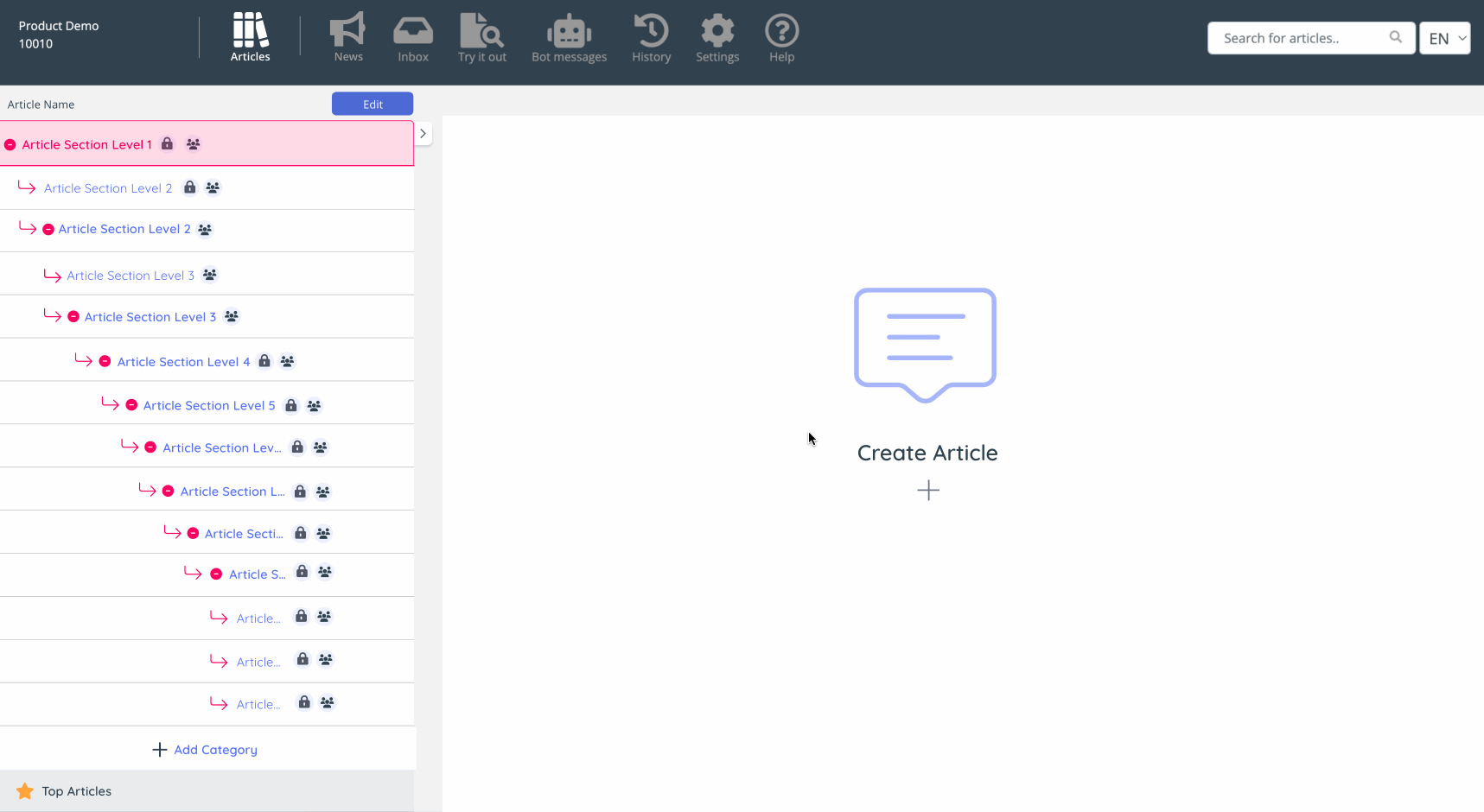Anjella De Los Reyes
Turning complex ideas into seamless experiences.
How do I create an efficient menu management experience and help supervisors to create, manage and organize article sections and categories easily?
We can help supervisors to create, manage, and organize articles in the contact center admin interface by providing a user-friendly article editor with options for creating sections and categories. Supervisors can easily organize content into nested sections and ensure articles are accessible to the right audience.
Project Overview
Project Title: Knowledge Management System – Create and Manage Sections and Categories and map to user group
My Role: User Experience (UX) Designer
Overview
In the first phase of the revamp, One of ultimate goal that has been requested was to redesign the menu, to create an intuitive system that allowed administrators to easily manage nested categories and sections and map it to specific user group while ensuring agents and consumers could effortlessly navigate and access the relevant information. The revamp of the knowledge management system for admin interface aimed to modernize the legacy system, enhancing its usability for administrators and improving accessibility for agents and end-users.
Objective
To enhance the user experience of knowledge management system allowing administrators to create and manage nested categories and sections. I aim to make it seamless to add, edit, and remove sections or categories as needed. Additionally, I want to improve the user experience, like how the to create and view news articles and announcements, ensuring users can intuitively navigate both current and archived content. Another key requirement is optimizing the agent-facing knowledge base widget to support nested structures while accommodating both public and private access groups, ensuring it remains easy to navigate for agents and end-users alike.
Key Challenges and Solutions
One of the challenges I faced during this task was the limited time available for research and competitor analysis. To address this, I collaborated closely with product owner and developers, gathering internal feedback. Through workshops and refinement meetings, we ensured alignment across teams and iterated quickly. Another challenge was managing the complexity of nested categories and sections, to make this process intuitive, I suggested to limit the levels of hierarchy. I streamlined the UI to allow users to effortlessly add, edit, remove, map to specific user group and toggle between nested categories ensuring a seamless experience for all.
Ideation
With a clear understanding of the objectives, I started by sketching low-fidelity wireframes to visualize how the hierarchy of nested sections and categories would look and function in both admin and agent view. I also created flow diagrams to map out user actions for managing content, such as adding, editing, and deleting sections, as well as accessing news articles. Throughout the process, I incorporated input from stakeholders during refinement workshops to ensure that the designs were not only user-friendly but also feasible for implementation.

Design
After our meeting to present my sketch, I quickly create high-fidelity mockups. For the admin interface, I focused on creating a hierarchical structure for nested sections with expandable and collapsible levels and intuitive action buttons for managing sections and categories and suggested to have another tab for news and announcement.
On the agent and consumer-facing widget, I ensured nested categories could be expanded or collapsed for smooth navigation. Additionally, I introduced a dedicated section for news articles, including a list view for browsing past articles and a detailed view for reading full content. This approach balanced speed with functionality, ensuring the solution met both admin and user needs.
Testing
Although formal usability testing wasn’t possible due to time constraints, I presented interactive prototypes during refinement meetings with developers and product owner. Adjusted designs based on immediate feedback to address usability concerns.
Result/Outcome
The revamped knowledge management system brought about significant improvements that made a real difference. For starters, content management became much more streamlined. Administrators could now easily manage nested categories and sections through an intuitive interface, with support for up to 10 levels of nesting, offering the flexibility needed to handle complex information hierarchies. Usability also saw a boost—both agents and consumers found it much easier to navigate the knowledge base widget, which in turn enhanced productivity and overall satisfaction. The addition of news articles and announcements allowed managers to communicate important updates more effectively, both internally and with external users. The feedback from stakeholders was incredibly positive. Thanks to the high-fidelity prototypes, we were able to align quickly with the development team, ensuring a smooth transition from design to implementation.





